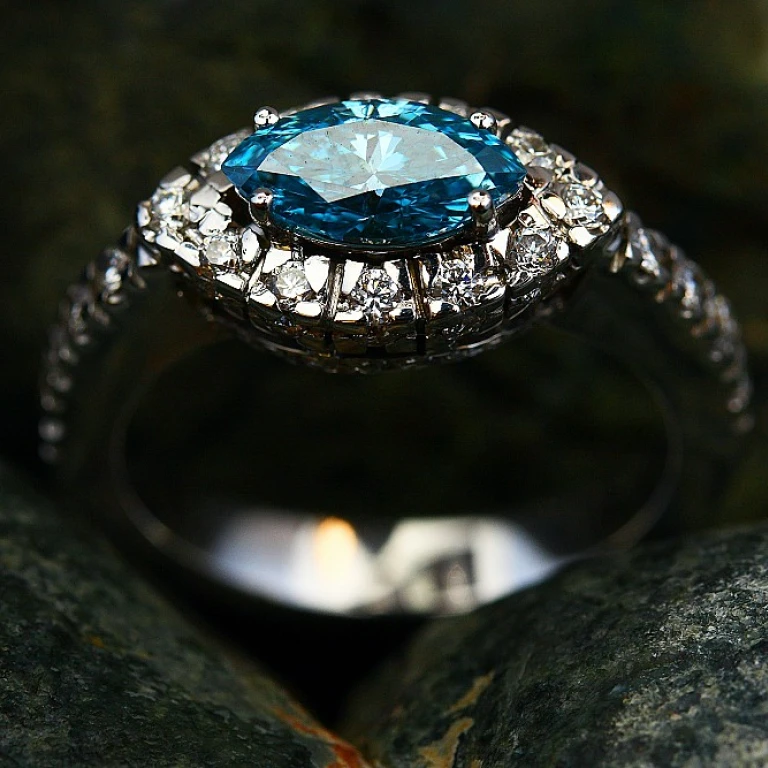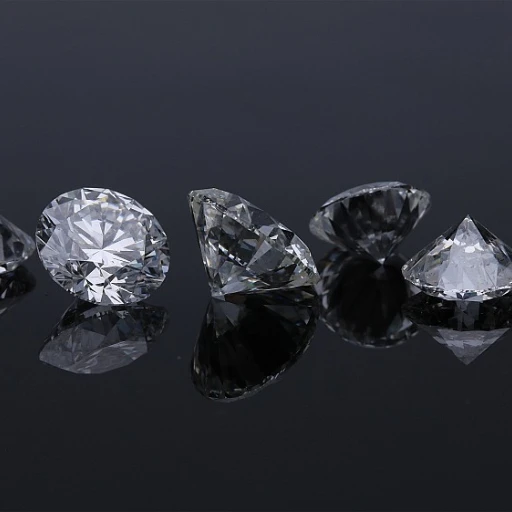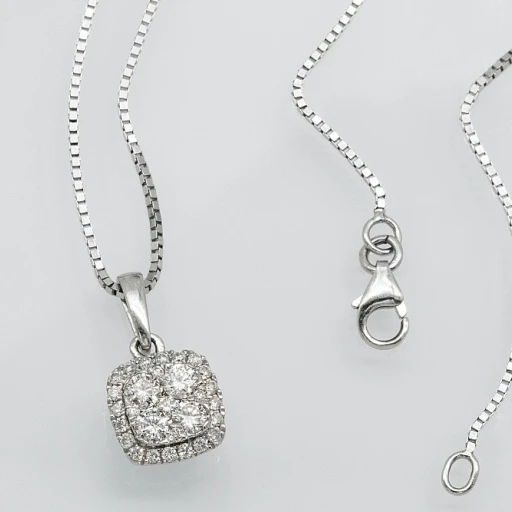Embracing the Past: Why Ancient Jewelry is Captivating Contemporary Collectors
Embracing the Past: Why Ancient Jewelry is Captivating Contemporary Collectors
The world of fine jewelry is experiencing a resurgent interest in the grandeur of ancient jewelry pieces. As leading analysts in the fine jewelry sector, we observe collectors' growing fascination with the historical significance and timeless beauty these artifacts embody. According to a recent study by Jewelers of America, "consumers show a rising interest in jewelry with a story, particularly ancient pieces, with a 20% increase in sales over the past year." This suggests not only a trend but also a shift in consumer values towards pieces that offer a narrative and heritage.
Rekindling a Connection with Antiquity
High-end collections are not just about the intrinsic value of gems and metals; they encapsulate stories, epochs, and civilizations. Every piece of ancient jewelry is a conversation starter, a piece of the puzzle in humanity’s rich history. It's this connection to our past that enamors the affluent buyer looking for depth beyond the sparkle. A Bain & Company report highlights how "luxury consumers are placing more importance on uniqueness and exclusivity, a niche perfectly served by ancient jewelry."
Investing in Timeless Elegance
Moreover, ancient jewelry represents an investment in timeless elegance. In an era defined by fleeting fashion trends, the diamond dynasty pieces offer permanence. Industry insiders often quote that "An ancient coin, embedded in a simple gold setting, will always carry its weight in history — and in value." Significant auction house results, such as the famous sale of a Hellenistic-period ring at Christie's, support this, where the piece fetched several times its estimated price. This is evidence of the scarce and unparalleled nature of these artifacts. The scarcity is underpinned by data from the World Gold Council indicating a finite supply of specific historical pieces, thereby increasing their worth over time.
Cultivating a Story-Led Brand
For a fine jewelry owner, wise incorporation of ancient jewelry into the brand's offerings can be a strategic advantage in a crowded marketplace. Specialists suggest, "A curated collection of ancient pieces can set a jewelry brand apart, offering customers not just adornment but a piece of history." This approach resonates with the consumer's desire for individuality and connection, as identified by the Luxury Institute's research indicating that approximately 65% of luxury buyers prefer items that tell a personal story.
Ultimately, the rise in prominence of ancient jewelry is a testament to the enduring allure of pieces with a profound historical narrative. Forward-thinking collectors are on the lookout for these timeless treasures, and savvy fine jewelry owners stand to benefit from catering to this high-demand niche. With a blend of rarity, beauty, and history, ancient jewelry captures the imagination and hearts of those looking to own more than just a fine piece of jewelry, but a legacy.
Ancient Allure: The Value and Rarity of Historical Artifacts in Today's Market
Diving into the Mystique of Historical Gems
Collectors and fashion aficionados alike are gravitating towards the timeless beauty of ancient jewelry, finding deep connections with pieces that transcend mere adornment to embody history and culture. A captivating facet of these historical treasures is their ability to tell a story, dating back centuries, and, in some instances, millennia. According to a report by the Antiquities Coalition, the global market for legitimate antiquities, including jewelry, is valued at billions of dollars, indicating a robust and growing interest in relics of the past.
The Resurgence of Heritage Jewelry
Not only does ancient jewelry offer a glimpse into the craftsmanship of bygone eras, but its rarity and the patina of time also significantly enhance its allure. The scarcity of such artifacts—be it a Hellenistic gold necklace or an Egyptian scarab ring—drives their value exponentially. Expert auctions have seen historical pieces fetch record-breaking prices; for instance, Christie's auction of Elizabeth Taylor's 'La Peregrina,' a 16th-century pearl, garnered an impressive $11 million.
Melding the Old with the New
Contemporary designers are ingeniously incorporating elements of ancient design into modern contexts, forging a fresh genre of jewelry that resonates with both history buffs and style mavens. Renowned brands like Bulgari and Cartier have often taken inspiration from the classical world, creating exquisite pieces that reflect an intimate dialogue between past and present. Designer Evocateur, for example, uses 22-karat gold leaf and imagery evoking ancient artifacts to craft pieces that are both historic in motif and modern in appeal.
Statistics indicate that the inclusion of ancient motifs can increase a brand's perceived value and appeal. In a recent survey, over 60% of luxury consumers expressed a preference for brands that exhibit a rich heritage and storytelling capability, which ancient-inspired jewelry perfectly encapsulates.
Crafting a Legacy: Integrating Ancient Elements into Modern Design
A Treasury of Time: The Investment Worth of Historical Jewelry Pieces
The allure of ancient jewelry resides not only in its aesthetic appeal but also in its scarcity and historical significance, factors that can make these artifacts immensely valuable in today's fine jewelry market. According to a recent report by the Knight Frank Luxury Investment Index, jewelry overall has seen an increase in value by 5% over the past 12 months. When it comes to pieces with historical provenance, that percentage can soar dramatically, as collectors are willing to pay a premium for a tangible piece of history. This rarity and exclusivity underpin the investment proposition that these ancient artifacts hold. For instance, a Roman ring dating back to the 4th century recently sold at auction for a staggering figure, far above its initial estimate, showcasing the financial potential these pieces can offer to discerning investors.
Cutting Through Time: Rare Gems in Historical Contexts
Accessibility to items of antiquity, like Greek bracelets or Egyptian necklaces, is limited due to their finite nature. This scarcity is one of the primary factors contributing to their desirability among high-end collectors. In a statistical overview, at major auctions, ancient jewelry lots often exceed their high estimates, suggesting a fierce market competition. The Gemological Institute of America (GIA) has noted a marked interest in rare gemstones with historical significance. For instance, gemstones such as the black Prince's Ruby and the Hope Diamond not only fetch high values but also bring a narrative that continues to captivate. It's the story entwined within each piece that yields its distinctive allure – a narrative that modern high-end collections are increasingly seeking to incorporate.
Designing Eternity: Time-Tested Beauty in Contemporary Collections
The mark of true luxury in fine jewelry today is not just brilliance or craftsmanship but also the uniqueness and story behind each piece. Designers are finding inspiration in the ornate and symbolic motifs found in ancient jewelry, crafting pieces that are a nod to bygone eras while meeting modern aesthetic standards. Take, for example, the resurgence of Georgian and Victorian-inspired motifs in contemporary ring designs, which has resulted in a noticeable increase in sales for pieces reflecting these styles—as reported by a leading jewelry trends analysis firm. High-profile celebrities have often been spotted donning such historically inspired pieces on red carpets, further testifying to their growing appeal and influence on current trends.



